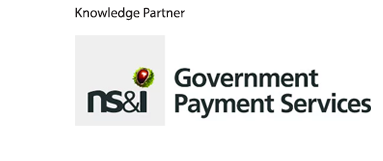Canada to hit defence spending target ‘half a decade ahead of schedule’, PM says

Canada has set out plans to increase defence spending quicker than expected, with prime minister Mark Carney outlining plans to upgrade what he called the country’s aged military equipment and infrastructure.
Canada spent 1.4% of its GDP on defence in 2024 and was on course to increase this to 2% of GDP by 2032 under former prime minister Justin Trudeau. During last year’s election campaign, Carney pledged to meet that target by 2030 – but has now announced the government will aim to hit the 2% target by the end of the current fiscal year in March 2026.
To achieve this, the country’s defence spending will increase by CAN$9.3bn (US$6.8bn) this fiscal year.
“Our military equipment and infrastructure have aged. Only one of our four submarines is seaworthy. Less than half our maritime fleet and military vehicles are operational,” Carney said.
“More broadly, we’re too reliant on the United States, so… Canada will achieve NATO’s target half a decade ahead of schedule.”
The investment programme is expected to allocate higher pay to the Canadian Armed Forces, as well as funding for new aircraft, armed vehicles, ammunition, new drones, and sensors to monitor the Arctic Sea floor.
Its commitment will also build on its defence policy, entitled Our North, Strong and Free (ONSAF). Announced last year, ONSAF aims to enhance Canada’s sovereignty, security and prosperity while driving economic growth.
During his announcement, Carney said that the country would also establish a new body, known as the Bureau of Research, Engineering and Advanced Leadership in Innovation and Science (BOREALIS), which will aim to spearhead and safeguard Canadian innovation in AI, quantum computing and cybersecurity. BOREALIS’s core goal is to develop 10 breakthrough national security technologies by 2028.
“We will ensure that every dollar is invested wisely, including by prioritising made-in-Canada manufacturing and supply chains,” Carney said.
“This is not about getting to 2%, full stop. It’s about defending Canada. Our ability to defend Canada is not at a point in time, it’s going to require sustained investment.”
Read more: Letter from Ottawa: Political uncertainty subsides, but new forms take its place
‘Warfighting readiness’
Canada’s commitment adds to other NATO members’ efforts to strengthen their military capabilities and foster innovation in national security. To date, 22 of NATO’s 32 members have met its minimum target for 2% of GDP to be spent on defence.
The UK has committed to increase spending on defence to 2.5% of GDP from April 2027. The UK’s prime minister Keir Starmer said that a “defence dividend” would be generated from this to boost jobs creation and opportunity.
The UK government has also announced a Strategic Defence Review that it said would help prepare British armed forces for new geopolitical realities and quicken the pace of innovation to boost national security.
Setting out the review, Starmer said the armed forces would be moved to a state of warfighting readiness and that the UK would work to add to the strength of NATO and accelerate innovation to a wartime pace.
He said the UK faced a plethora of new threats, including “nuclear risks, daily cyber-attacks [and] growing Russian aggression in our waters”, and described national security as “organising principle of government”.
Read more: UK government defence review pledges to ‘accelerate innovation to a wartime pace’
In May, the Estonian government approved a defence investment programme that is expected to raise its annual defence budget to an average of 5.4% of GDP from 2026 to 2029, amounting to an additional €2.8bn (US$3.1bn) in defence spending over the next four years.
A month earlier, the Estonian government announced a new defence industry policy for 2024–2030, which aims to guide the development of the defence industry to fulfil economic growth and international competitiveness.
Estonia’s new pledge exceeds president Trump’s demand that NATO members boost defence spending to 5% of GDP. Nato secretary general Mark Rutte is expected to push members to agree to a new spending target of 3.5% of GDP at a summit later this month.
Read more: Estonia exceeds Trump’s defence spending target with 5.4% GDP pledge





















